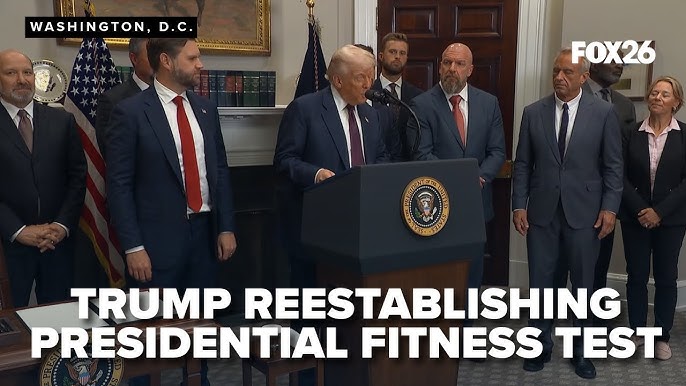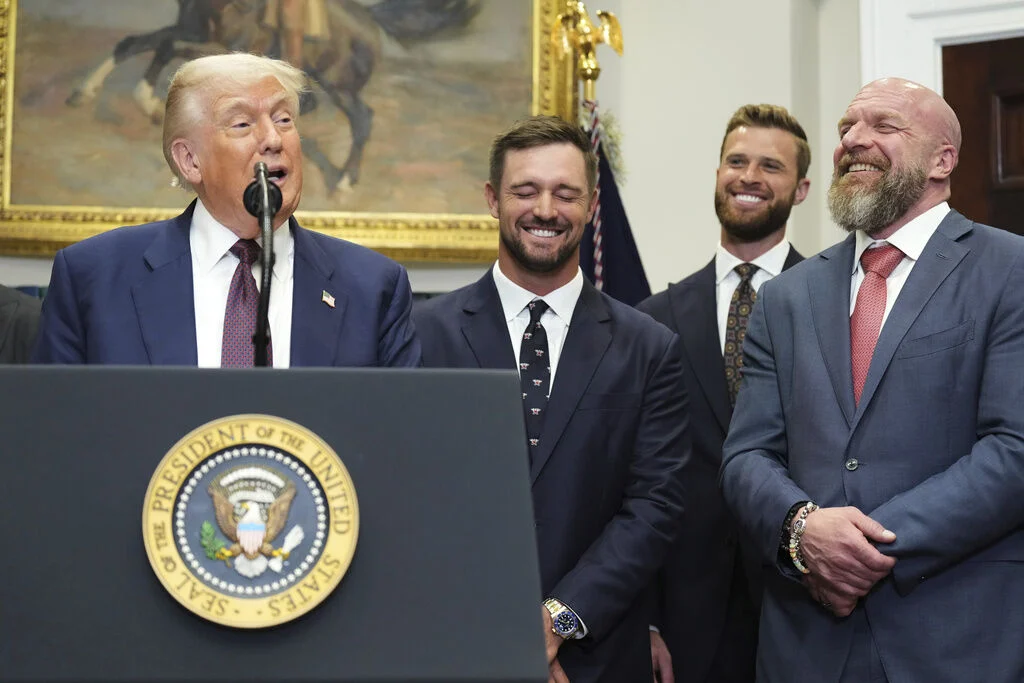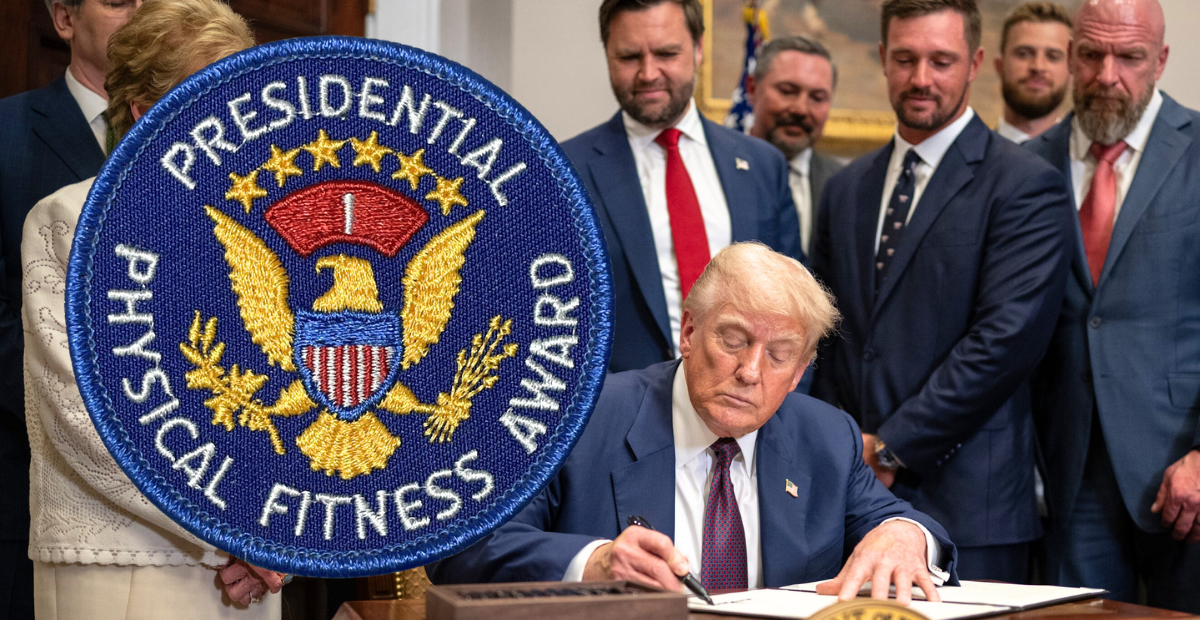The Presidential Fitness Test, that biannual gym class rite in which you were instructed to run, stretch, and hang from a bar as other students watched, is probably still fresh in your mind if you grew up in the land of the free. It was a great time for some. It was survival mode for others. While seeming straightforward on paper, including jogging a mile or accomplishing a few pull-ups, the Presidential Fitness Test Standards turned into the ultimate playground obstacle.

But have you ever considered the motives of this test? Or who makes that choice that a 12-year-old should be permitted to hang for 12 seconds from a bar? This article explores the origins of the Presidential Fitness Test Standards, what was expected of children, and how they came to be connected with awkward gym class experiences. Each has a “survival” tale from the days of the Presidential Fitness Test, whether it involves calculating ceiling tiles during sit-ups or crushing the mile run.
What Was the Presidential Fitness Test?
Students globally took the Presidential Fitness Test, a set of physical exercises aimed for evaluating an individual’s level of fitness. It was a response by America to the growing question, “Are our kids fit enough?” and was first implemented in the 1950s, during the administration of President Eisenhower. It could surprise you to learn that the idea originated after research found that young people in America lacked the athletic abilities of their European peers. The Presidential Physical Fitness Program commenced when the government determined it was time to take steps.
The Classic Test Components
Using the guise of a school gym assignment, the Presidential Fitness Test was a full-body workout. The testing procedure has evolved over time by including a range of exercises designed to evaluate strength, agility, flexibility, and endurance. Some children hoped to pass through it without becoming fully ashamed, while others saw it as their Olympic moment.
The traditional elements that comprise this famous test are as follows:
1. The One-Mile Run
This was the pinnacle of endurance warfare. You had to run as fast as you could for every single mile. Some saw it as an opportunity to shine, while others saw it as four laps of horrible suffering. The objective? Depending on your age and gender, finish within a specific period of time.
2. One-Minute Sit-Up Test
In a minute, how many sit-ups could you finish? This was an examination of willpower, not simply core strength. Over you, a gym instructor with a timer tallied every rep while pointing out any improper form.
3. Pull-ups, also known as a flexed arm hang
The most hated test of all, perhaps. While girls regularly received the flexed-arm hang, or were required to just hang on for dear life with their chin above the bar, boys were expected to perform a specific number of pull-ups. Doesn’t that sound easy to do? It wasn’t.
4. Reach and Sit
The sit-and-reach test was used to measure flexibility. Reach as far past your toes as you can while sitting on the floor with your legs straight. This was an embarrassing experience for those of us who are unable to adapt. “Yes, I am making an effort! My hamstrings simply don’t cooperate!
5. The Shuttle Run
Here, speed and agility were key factors. You had to run between two lines during the shuttle run while grasping wooden blocks as you went. It all came down to how fast you could reverse route without stumbling over your own feet.
6. V-Sit Reach (Later Addition)
As a replacement or alternative to the sit-and-reach, the V-sit reach was introduced in later years. It had the same goal: testing flexibility, just in a slightly different setup.
Each component had its own set of Presidential Standards, and only those who met or exceeded them across all tests earned the coveted Presidential Physical Fitness Award. For many, it was a badge of honor. For others, it was just relief when the testing week was finally over.
Standards & Benchmarks (By Age & Gender)
The Presidential Fitness Test’s strict standards were one of the elements that made it so memorable—and occasionally stressful. In order to win that sparkling Presidential Physical Fitness Award, you had to meet certain age and based on gender standards; simply “participating” was insufficient.The purpose of the test requirements was to gauge your level of fitness in comparison to your peers around the country. Although the intentions, a few kids felt that the expectations were quite high. An outline of those criteria can be obtained here:

Mile Run Times
- Boys (10-12 years old): Complete in 8 minutes or less.
- Girls (10-12 years old): Complete in 9 minutes or less.
Older age groups were expected to shave even more time off.- Pull-Ups (Boys) / Flexed Arm Hang (Girls)
Boys (10-12 years old): Minimum of 6 pull-ups.
Girls (10-12 years old): Hold a flexed-arm hang for 12 seconds.
As kids got older, the expectations increased (and so did the pressure!).
Sit-Ups (1-Minute Test)
Boys (10-12 years old): Around 35 sit-ups in one minute.
Girls (10-12 years old): Around 30 sit-ups in one minute.
This one turned into a “let ’s-hope-the-teacher-counts-every-rep” moment.
- Pull-Ups (Boys) / Flexed Arm Hang (Girls)
Obtaining the Presidential Award
Students have to score in the 85th percentile or better in each of the five categories in order to get the Presidential Physical Fitness Award. You were unsuitable if you failed to meet the requirements for even one component. In the past, obtaining the certificate (and patch!) was essential because it was a “all or nothing” situation.
As a consolation prize, there were National and Participant Awards for individuals who performed well but fell foul of the presidential standards. In all truthfulness, though, everyone secretly wants the Presidential one.
Why Was It Eventually Phased Out?
The Presidential Fitness Test was a feature of American schools for many years, but as time went on, educators and health professionals started wondering, “Is this really the best way to promote fitness?” Despite the test’s noble goals, its approach started to seem old and even ineffective. The Presidential Fitness Test was eventually phased out for the following reasons:
1. It prioritised ranking over encouraging.
Rather than being a personal evaluation of health, the test frequently felt more like a competition. Students were evaluated based on national norms rather than their unique growth. Many children, particularly those who weren’t naturally athletic, considered it to be more of an embarrassing than an inspiring experience. It occasionally had the change effect, resulting in emotions of failure and despair, opposed to motivating the lifespan exercise practices.
2. Individual Fitness Levels Were Neither Included
The test’s premise that all children should meet the same standards, regardless of where they are coming from, was one of its main concerns. Personal development and the celebration of minor victories were out of the question. Even if a student significantly improved their mile time, they might still “fail” the test if they fell short of the required time.
3. It Produced Pressure on Public Performance
Let’s face it, many kids did not feel particularly more confident when they were asked to perform pull-ups in front of the class. The testing’s public aspect frequently made children feel shamed or self-conscious, which wasn’t the healthiest method of promoting exercise.
4. Transition to Education for Lifelong Fitness
Schools started to shift away from one-size-fits-all examinations and towards programs that prioritised particular fitness goals, healthy habits, and all-around physical education as knowledge of fitness and health advanced. Instead of comparing kids to the national average, the focus was shifted to helping them understand their own distinctive fitness path.
5. It Was Replaced by FitnessGram
The FitnessGram exam became the new standard in schools at the start of the decade. In contrast to the Presidential Test, FitnessGram promotes one’s growth above strict requirements and is intended to evaluate health-related fitness zones (such as aerobic capacity, body composition, flexibility, etc.). primarily focused on a single performance, it’s a far personalised strategy meant for fostering lifetime fitness.
Did It Work? Legacy of the Presidential Fitness Test
In retrospect, the Presidential Fitness Test was a daring effort to increase young fitness awareness across the country. It acted as a warning to families and schools at a time when worries about physical inactivity were growing. It was successful in drawing attention to the topic of fitness and increasing pupils’ awareness of their physical capabilities, or lack thereof, in certain situations. However, your definition of success will determine whether it actually works. The test failed if the objective was to teach each student good behaviours for the rest of their lives. Students frequently felt evaluated rather than inspired by its strict standards and pressure to perform well in front of the public.
Modern Fitness Standards: How Things Have Changed
The method that fitness is learnt in schools today contrasts greatly from that of the Presidential Fitness Test. Contemporary fitness standards focus on promoting long-term well-being, inclusion, and health as opposed to rivalry and comparison. Nowadays, the objective is to assist every student find a way to be active in a way that suits them, rather than just to see who can do the most sit-ups or run the fastest mile.
The FitnessGram, an unusual kind of evaluation that took the place of the traditional test in many schools, was one of those most major modifications. Students are not ranked against other people on FitnessGram. Rather, it evaluates if they are in a good fitness zone by considering things like strength, flexibility, body composition, and cardiovascular endurance.

kbkph7
Pingback: Key Factors in Trump vs. JB Pritzker: Who Holds the Edge?
Pingback: Voucher Push and Private Schools: Study Finds Dramatic Shift in Education Landscape - statesgazette